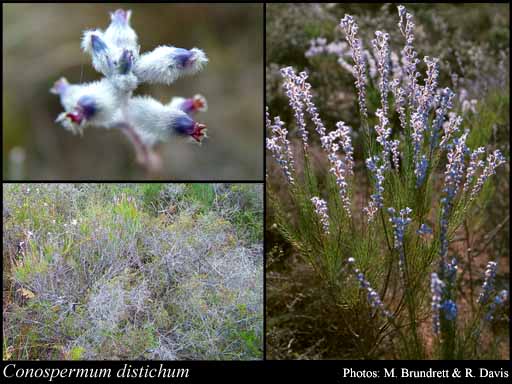- Reference
- Trans.Linn.Soc.London 10:155 (1810)
- Conservation Code
- Not threatened
- Naturalised Status
- Native to Western Australia
- Name Status
- Current
Bushy, non-lignotuberous shrub, 0.3-1(-1.3) m high. Fl. white/white-blue, Aug to Dec. White, grey or yellow sand, sandy gravel. Coastal sand dunes, granite outcrops, sandplains, roadsides.

Scientific Description
Shrubs, 0.5-1 m high; branchlets hairy. Leaves alternate, 30-85 mm long, 0.5-1 mm wide, glabrous; lamina flat, more or less the same width throughout, entire, incurved. Inflorescences leafy, the flowers dispersed singly, cream, grey or blue, glabrous; floral bracts 2.2-3.2 mm long, glabrous. Perianth 6-11 mm long, irregular, hairy; upper lip 1.5-2 mm long, glabrous; lower lip 0.5-1 mm long, hairy. Nut 1.8-2.8 mm long. Flowers in August, September, October, November or December. Occurs in the Eremaean (ER) or South-west (SW) Botanical Province(s), in the Coolgardie (COO), Avon Wheatbelt (AW), Mallee (MAL) or Esperance Plains (ESP) IBRA subregion(s).
Distribution
- IBRA Regions
- Avon Wheatbelt, Coolgardie, Esperance Plains, Mallee.
- IBRA Subregions
- Eastern Mallee, Fitzgerald, Katanning, Mardabilla, Recherche, Western Mallee.
- IMCRA Regions
- WA South Coast.
- Local Government Areas (LGAs)
- Cranbrook, Dumbleyung, Esperance, Jerramungup, Kulin, Lake Grace, Narrogin, Ravensthorpe, Woodanilling.